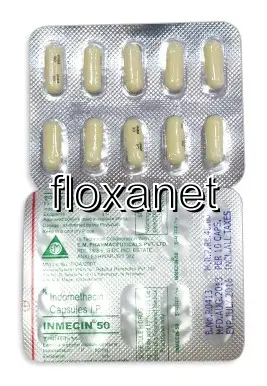| Package | Dosage | Price | Price per Dose | |
|---|---|---|---|---|
| Dosage: 25mg | ||||
| 360 pill | 25mg | $184.59 | $0.51 | |
| 180 pill | 25mg | $115.19 | $0.64 | |
| 120 pill | 25mg | $84.65 | $0.71 | |
| 90 pill | 25mg | $70.77 | $0.79 | |
| 60 pill | 25mg | $48.57 | $0.82 | |
| 30 pill | 25mg | $26.36 | $0.87 | |
| Dosage: 50mg | ||||
| 360 pill | 50mg | $230.39 | $0.64 | |
| 180 pill | 50mg | $149.89 | $0.83 | |
| 120 pill | 50mg | $113.80 | $0.94 | |
| 90 pill | 50mg | $97.15 | $1.08 | |
| 60 pill | 50mg | $66.61 | $1.11 | |
| 30 pill | 50mg | $37.46 | $1.24 | |
| Dosage: 75mg | ||||
| 360 pill | 75mg | $524.65 | $1.46 | |
| 270 pill | 75mg | $401.12 | $1.49 | |
| 180 pill | 75mg | $274.81 | $1.53 | |
| 120 pill | 75mg | $188.75 | $1.57 | |
| 90 pill | 75mg | $144.34 | $1.60 | |
| 60 pill | 75mg | $101.31 | $1.68 | |
| 30 pill | 75mg | $54.12 | $1.79 | |

Indomethacin Description
Introduction to Indomethacin
Indomethacin is a nonsteroidal anti-inflammatory drug (NSAID) commonly prescribed for the treatment of various conditions involving pain, inflammation, and fever. It has been used for decades in clinical practice and remains a valuable option for managing symptoms related to several musculoskeletal disorders. Its effectiveness stems from its ability to inhibit the production of prostaglandins, which are chemicals involved in the inflammatory process. This makes it particularly useful in conditions like arthritis, gout, and certain types of bursitis.
Uses and Indications
The primary indications for indomethacin include the relief of pain and inflammation associated with rheumatoid arthritis, osteoarthritis, ankylosing spondylitis, and gouty arthritis. It is also used for the treatment of acute bursitis, tendinitis, and certain types of headache, such as migraines. In some cases, it is prescribed to close patent ductus arteriosus in premature infants, although this is a more specialized use. Patients should always follow their healthcare provider’s instructions to ensure the medication is used appropriately.
Mechanism of Action
Indomethacin works by blocking cyclooxygenase (COX) enzymes, primarily COX-1 and COX-2. These enzymes are involved in the synthesis of prostaglandins, which promote pain, inflammation, and fever. By inhibiting these enzymes, indomethacin effectively reduces these symptoms. However, this mechanism also accounts for many of its side effects, as prostaglandins play protective roles in the gastrointestinal tract and other tissues.
Dosage and Administration
The dosage of indomethacin varies depending on the condition being treated, patient age, weight, and overall health. It is typically prescribed in the form of capsules or oral suspensions, to be taken with food or milk to minimize gastrointestinal discomfort. Patients are advised to follow their healthcare provider’s instructions carefully and not to exceed the recommended dose. Regular monitoring may be necessary during long-term therapy to assess efficacy and detect potential adverse effects.
Potential Benefits
Many users find indomethacin highly effective in alleviating acute pain and reducing inflammation. Its swift action can provide relief within hours of the first dose. Patients with chronic conditions often notice improved joint mobility and decreased tenderness over time. For those suffering from gout, it can significantly reduce the duration and intensity of flare-ups. Overall, it is regarded as a potent medication when used appropriately under medical supervision.
Side Effects and Precautions
Despite its benefits, indomethacin can cause side effects. Common ones include gastrointestinal issues such as nausea, vomiting, abdominal pain, and indigestion. More serious adverse effects involve gastrointestinal bleeding, ulcers, cardiovascular risks, and kidney impairment. Patients with a history of heart disease, gastrointestinal problems, or kidney issues should use this medication with caution. Regular medical check-ups are essential to monitor for adverse reactions and to ensure safe use.
Drug Interactions and Contraindications
Indomethacin may interact with other medications, including anticoagulants, other NSAIDs, corticosteroids, and blood pressure drugs. These interactions can increase the risk of bleeding or other complications. It is contraindicated in individuals with known hypersensitivity to NSAIDs, active gastrointestinal bleeding, or severe heart failure. Always inform your healthcare provider about all medications you are taking to avoid potential interactions.
Final Thoughts
In summary, indomethacin is a powerful anti-inflammatory drug with a broad range of applications. While it provides significant relief from pain and inflammation, it also carries risks that require careful management. When used responsibly under medical guidance, it can improve quality of life for many patients. However, due attention to dosage, side effects, and potential interactions is crucial to ensure safe and effective therapy.
